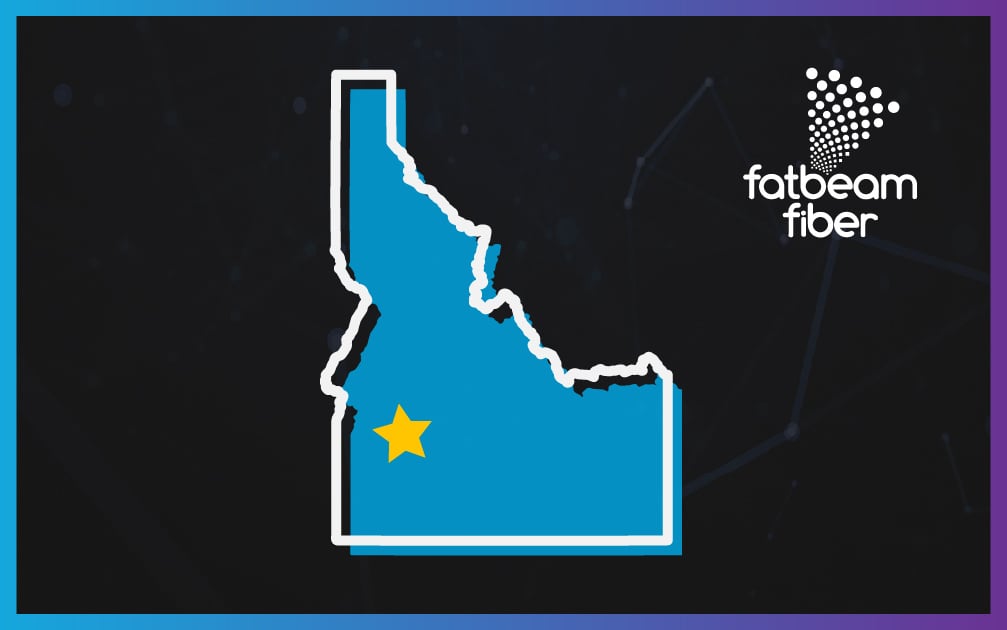A slow or unreliable internet connection doesn’t just frustrate business leaders – it can slow down projects, make collaboration harder, and even impact the experience your customers have with you. That’s why many organizations are exploring the differences between broadband and fiber before deciding what’s best.
In this blog, we’ll break down the differences between broadband vs fiber to give you a clearer picture of which option might be the right fit for your team.
What’s the Difference Between Broadband and Fiber?
Both broadband and fiber optic internet deliver high-speed internet – but the technology behind them, and the performance they offer, are very different. Let’s answer a few questions we’re frequently asked to give you a better idea of how these connectivity options differ.
Is Broadband the Same as Fiber?
No. Broadband is a general term that refers to any high-capacity internet connection that transmits data over a wide bandwidth. This includes technologies like:
- DSL (Digital Subscriber Line): uses copper telephone lines
- Cable: transmitted through coaxial cable
- Satellite: delivered via orbiting satellites
Fiber is also a type of broadband. It uses thin strands of glass and light signals to send data, making it much faster and more reliable than other broadband technologies.

So, while fiber internet is broadband, not all broadband is fiber. When people compare “broadband vs fiber,” they’re usually looking at fiber optic internet versus older broadband technologies like cable or DSL.
Is Fiber Optic Internet Better?
In short: yes, for most business use cases.
In addition to delivering faster and more reliable connectivity than other broadband types, fiber is designed to handle heavy workloads without slowing down. It can also move large amounts of data quickly, which makes it ideal for cloud apps, video conferencing, and growing teams that can’t afford interruptions.
Broadband vs Fiber: Compared
Here’s how broadband and fiber optic internet compare across some of the factors businesses care about most:
Speed
Faster internet connectivity can make a noticeable difference for teams working in the cloud, sharing files, or holding video calls.
Broadband speeds vary depending on the technology, but are typically:
- DSL: 5–35 Mbps (down), 1–10 Mbps (up)
- Cable: 25–1,000 Mbps (down), 5–50 Mbps (up)
- Satellite: ~25 Mbps (down), ~3 Mbps (up)
Meanwhile, most fiber plans start at 1 Gbps (1,000 Mbps) and scale up from there. And fiber optic internet isn’t just faster; it also delivers more consistent speeds during peak usage. Cable connections, for example, tend to slow down when many users in the same area are online.

Reliability
The majority (75%) of Americans are working remotely at least some of the time.1 Supporting flexible work models requires businesses to depend on real-time communication and cloud services, which need a stable connection.
Fiber generally provides lower latency, consistent uptime, and less electromagnetic interference compared to copper or satellite technologies, making it a better fit for tools like VoIP and remote access platforms.
Symmetrical Speeds
Most broadband services provide faster downloads than uploads, which can create headaches for teams sharing large files or using real-time communications.
Fiber offers symmetrical speeds, so uploads are just as fast as downloads. It keeps performance consistent in both directions, which means smoother performance in cloud and real-time collaboration platforms.
Security
Fiber connections are more secure than copper or wireless options. They're harder to tap or intercept without detection, immune to the electromagnetic interference that may affect copper lines, and support private networking with multiple encryption layers.
Scalability
As organizations grow, so do their internet needs. In fact, recent data shows that 30% of enterprises have seen bandwidth demands increase by over 50% per year.2

Fiber scales easily with multi-gig speeds and upgrades that don’t require ripping out existing infrastructure. Legacy broadband may be fine for smaller teams, but it doesn’t scale well – which could force costly upgrades or service migrations later on.
Total Cost of Ownership
Traditional broadband options like DSL and cable use widely available infrastructure, making them a cheaper solution upfront. But while fiber can involve higher upfront costs, many businesses find the investment pays off quickly through fewer outages, smoother operations, and less need for future upgrades.
Choosing Fiber vs Broadband for Your Business
If you’re still not sure whether fiber is better for your business, here are a few questions you can ask:
- Do you run cloud-based tools or VoIP systems? These apps perform much better on fiber connections.
- Do your employees need fast upload speeds for video calls or file sharing? Fiber's symmetrical speeds eliminate upload bottlenecks.
- Are you planning to scale operations or open new locations soon? Fiber grows with your business more easily than traditional broadband.
- Are uptime and reliability important to your operations? Fiber provides more consistent service.
- Does your team work remotely or rely on real-time collaboration? Fiber supports these work styles better.
If you answered yes to any of these, fiber is likely the better option. Broadband may still work for small offices or less critical use cases, but fiber is usually the smarter long-term choice.

Ready To Ditch Your Legacy Broadband? Get Started With Fatbeam Fiber
While choosing the right internet connection is one of the most important technology decisions your business will make, moving from traditional broadband to fiber doesn't have to be complicated. The key is working with a provider who truly understands your business needs.
At Fatbeam, we provide enterprise-grade, symmetrical fiber connectivity with high capacity, low latency, and 99.99% uptime. Our network is purpose-built to deliver the bandwidth and speeds organizations need to stay competitive – so whether you’re running multiple sites, supporting hybrid teams, or moving more workloads to the cloud, Fatbeam offers reliability you can count on.
Our fiber networks are:
- Built for businesses with symmetrical, scalable speeds that grow with your operations.
- Highly secure and resilient for compliance-driven industries that can't afford downtime.
- Backed by responsive, local support every step of the way, from installation to ongoing service.
Need help comparing options or checking availability in your area? Contact Fatbeam today to talk to a member of our team.
Sources:
- https://www.pewresearch.org/short-reads/2025/01/13/many-remote-workers-say-theyd-be-likely-to-leave-their-job-if-they-could-no-longer-work-from-home
- https://business.comcast.com/community/docs/default-source/default-document-library/idc-futurescape_-worldwide-future-of-connectedness-2024-predictions.pdf?sfvrsn=d04a6a2c_1


